National intervention to prevent central line-associated bloodstream infection

In hospitals with a disproportionate burden of health care-associated infection, a multimodal intervention did not reduce rates of CLABSI” Patel et al (2019). Abstract: BACKGROUND: Central line-associated bloodstream infection (CLABSI) remains prevalent in hospitals in the United States. OBJECTIVE: To evaluate the impact of a multimodal intervention in hospitals with elevated rates of health care-associated […]
Current state of vascular access in Singapore

This article described the current state of vascular access management for patients with end-stage renal disease in Singapore” Pang et al (2019). Abstract: This article described the current state of vascular access management for patients with end-stage renal disease in Singapore. Over the past 10 years, there has been a change in the demographics of end-stage […]
Impact of vascular access outcome in patients at high bleeding risk

We aimed to assess the impact of vascular access site on bleeding complications after percutaneous coronary interventions for HBR patients at 30-day and 2-year follow-up” Jiménez Díaz et al (2019). Abstract: INTRODUCTION AND OBJECTIVES: The prognostic impact of bleeding in high bleeding risk (HBR) patients depending on the location of bleeding and prognosis in nonaccess […]
Hemodynamics involved in ischemic steal syndrome of AV access
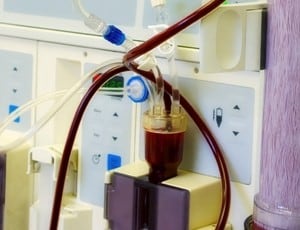
The arteriovenous fistula is the preferred access but remains susceptible to complications, among which ischemic steal syndrome is the most serious” Hong (2019). Abstract: Long-term hemodialysis, the main treatment modality for patients with end-stage renal disease, requires reliable vascular access. The arteriovenous fistula is the preferred access but remains susceptible to complications, among which ischemic […]
Effectiveness of an IV protection device in pediatric patients

The study aimed to examine the efficacy of the I.V. House® UltraDressing® for protecting peripheral intravenous catheters (PIVCs) in pediatric patients” Büyükyılmaz et al (2019). Abstract: PURPOSE: The study aimed to examine the efficacy of the I.V. House® UltraDressing® for protecting peripheral intravenous catheters (PIVCs) in pediatric patients. METHODS: This randomized controlled trial comprised 60 […]
Safety of midline catheters for intravenous therapy

The purpose of this study is to evaluate the safety of MCs for extended intravenous use” Seo et al (2019). Abstract: Background: Midline catheters (MCs) have arisen as alternatives to peripherally inserted central catheters (PICCs) for both general intravenous therapy and extended outpatient parenteral therapy. However, there is a lack of data concerning the safety […]
CLABSI in pediatric home parenteral nutrition patients

To describe antimicrobial resistance patterns and determine the most appropriate empiric antibiotic therapy in HPN dependent children experiencing a community-acquired CLABSI” Raphael et al (2019). Abstract: BACKGROUND: Patients receiving home parenteral nutrition (HPN) are at high-risk for central line associated bloodstream infections (CLABSI). However, there are no published management guidelines for the antibiotic treatment of […]
Successful insertion of PICC in a patient with persistent left superior vena cava
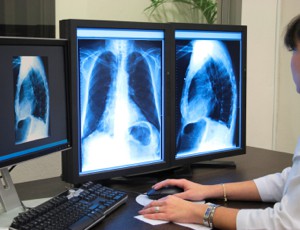
After obtaining written informed consent, we present a case where two successful insertions of PICC were performed in a 50-year-old female patient with PLSVC and right SVC” Kang et al (2019). Abstract: RATIONALE: Peripherally inserted central catheters (PICC), normally located at the lower 1/3rd of the superior vena cava (SVC) and cavo-atrial junction, are commonly […]
Distal ulnar approach in the palmar artery for coronary angiography

The study was aimed at proving the preliminary feasibility, safety, and reliability of the right distal ulnar palmar approach in 15 consecutive patients” Valsecchi et al (2019). Abstract: Background: Transradial and translunar approaches, associated with fewer bleeding and vascular complications than transfemoral access, have been adopted and increasingly utilized following a “radial-first strategy.” Approaches that […]
Tiered approach for preventing central line-associated bloodstream infection

Because applying all of the evidence en masse (especially in hospitals struggling with high rates of HAI, such as CLABSI) was unlikely to be successful, we used lessons learned from a successful Veterans Affairs collaborative to create a tiered, or stepped, approach to prevent CLABSI” Patel et al (2019). Extract: Because applying all of the […]
Pulmonary artery embolization of implantable port catheter fragment

Broken catheter embolism is a rare but often fatal complication of implantable venous access devices” Tandon et al (2019). Abstract: Broken catheter embolism is a rare but often fatal complication of implantable venous access devices. Prompt removal is key to avoiding an adverse outcome. You may also be interested in… [rp4wp] Reference: Tandon, S., Livingston. […]
Risk of major complications after peripheral IV norepinephrine infusion

In the current database analysis, no significant association was found between the use of peripheral intravenous norepinephrine infusions and adverse events” Pancaro et al (2019). Abstract: BACKGROUND: Continuous infusions of norepinephrine to treat perioperative hypotension are typically administered through a central venous line rather than a peripheral venous catheter to avoid the risk of localized […]
Treatment of central venous perforation from central venous catheter

The present study reports on a case of a 64-year-old female who developed massive hemothorax and hemorrhagic shock after long-term dialysis due to central venous perforation during placement of the central venous catheter” Zhou et al (2019). Abstract: Central venous catheter is one of the most commonly used vascular therapies in patients receiving hemodialysis and […]
Using tablet-type ultrasonography to assess peripheral veins for IV catheterization
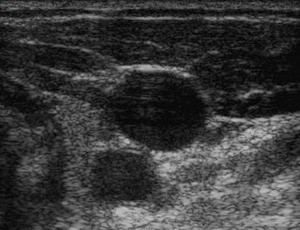
This cross-sectional study aimed to verify the reliability and validity of a tablet-type device in assessing vein size and depth for catheter site selection and detecting thrombus with resultant subcutaneous edema as a cause of catheter failure using US” Takahashi et al (2019). Abstract: Purpose: In clinical settings, ultrasonography (US) has recently been used to […]
Modification of blood test draw order to reduce blood culture contamination
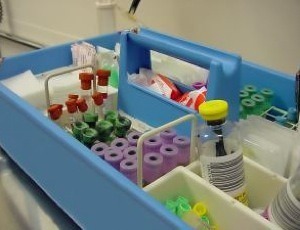
This study was designed to test whether diversion of blood obtained at venipuncture into a lithium-heparin tube prior to aspiration of blood culture reduces contamination” Zimmerman et al (2019). Abstract: BACKGROUND: Blood culture contamination leads to unnecessary interventions and costs. It may be caused by bacteria in deep skin structures unsusceptible to surface decontamination. This […]
Chlorhexidine gluconate utilization for infection prevention in the NICU

The purpose of this project was to survey neonatal nurse practitioners and nursing leaders across NICUs regarding the current use of chlorhexidine gluconate (CHG) in term and preterm infants” Beekman and Steward (2019). Abstract: BACKGROUND: Central-line-associated bloodstream infection (CLABSI) contributes to significant morbidity and mortality in the neonatal intensive care unit (NICU). Disinfection of skin […]
Risk factors of catheter-related thrombosis in early-stage breast cancer patients

Totally implantable venous access devices (TIVADs) are widely used in cancer patients. The main purpose of our study is to observe the incidence and identified risk factors of catheter-related thrombosis (CRT) in breast cancer patients with TIVAD” Tan et al (2019). Abstract: PURPOSE: Totally implantable venous access devices (TIVADs) are widely used in cancer patients. […]
Vascular access type and hemodialysis patient outcomes
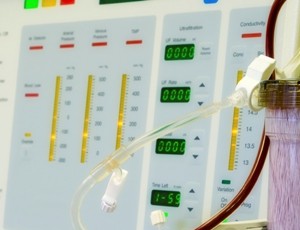
This study aimed to examine the impact of VA type on cardiovascular and all-cause mortality as well as the predictors for outcome in elderly Chinese patients” You et al (2019). Abstract: OBJECTIVES: Current studies suggest arteriovenous fistula (AVF) and arteriovenous graft as superior vascular access (VA) types for elderly hemodialysis (HD) patients due to better […]
Implications of the SHM position statement on ultrasound guided vascular access

In the position statement released by the Society of Hospital Medicine (SHM), Franco–Sadud et al. outline the transformative effects ultrasound can have in obtaining adult vascular access” Anstey and Lai (2019). Extract: Is there a single intervention more important to hospitalized patients than vascular access? Since their advent in the 1950s, small plastic tubes have […]
Reaching one peripheral IV catheter per patient visit

By centralizing ownership of vascular access with the team for insertion, management, and securement, the PIV Five Rights is the right approach to achieve the right results in transformation of hospital infusion therapy practices” Steere et al (2019). Abstract: Background: Peripheral intravenous catheter (PIVC) sales per year exceed that of the number of people in […]
Severe skin extravasation injury following IV injection of potassium chloride

In our case, the damage owing to extravasation of KCl into the surrounding tissue was severe” Richa et al (2019). Extract: In our case, the damage owing to extravasation of KCl into the surrounding tissue was severe. The main determining factors were GA (loss of pain sensation), type of drug (KCl) with vesicant properties, direct […]
Case of retained central venous catheter guidewire

This report presents a rare case of a retained venous guidewire that was discovered two years after central venous catheterization” Arnous et al (2019). Abstract: BACKGROUND: Retained guidewire is a recognized complication of intravascular interventions. The majority of cases are identified immediately or shortly after the procedure. In rare cases, the guidewire is identified incidentally […]
Prediction of nonelective neonatal central venous catheter removal

Nonelective CVC removal (NER) is an inadequately studied outcome associated with increased morbidity, infant and family stress, and cost” Beard et al (2019). Abstract: INTRODUCTION: Central venous catheters (CVCs) are essential to neonatal care but associated with significant morbidity. Nonelective CVC removal (NER) is an inadequately studied outcome associated with increased morbidity, infant and family […]
Transfer rate of pathogens through implantable port membrane

Our aim was to examine the extent of pathogen transfer into a SVP by puncturing an in vitro contaminated injection membrane and to evaluate techniques to reduce this transmission” Taxbro et al (2019). Abstract: Introduction: Reliable venous access is a cornerstone in delivery of cytotoxic drugs, and subcutaneous venous ports (SVPs) are commonly used. Pocket […]
Risk factors for central venous catheter-related bloodstream infections

Our study aimed to identify the risk factors playing a role in central venous catheter-related bloodstream infections (CR-BSI) in a tertiary large volume university hospital” Bekçibaşi et al (2019). Abstract: Our study aimed to identify the risk factors playing a role in central venous catheter-related bloodstream infections (CR-BSI) in a tertiary large volume university hospital. […]
Impact of early dressing removal on tunneled central venous catheters infections

Central Venous Catheters (CVC) are linked with Catheter-related bloodstream infections (CLABSI) or exit-site infections. Dressings may reduce the rate of infection, but they are uncomfortable, do not eliminate the risk of infection, and in some cases become the cause of infection” Ammar et al (2019). Abstract: BACKGROUND: Central Venous Catheters (CVC) are linked with Catheter-related […]
Needlestick and sharps injuries in orthopedic surgery residents

Needlestick and sharps injury (NSSI) is a common occupational hazard of orthopedic surgery training. The purpose of this study was to examine the incidence and surrounding circumstances of intraoperative NSSI in orthopedic surgery residents and fellows and to examine postexposure reporting” Snavely et al (2019). Abstract: OBJECTIVE: Needlestick and sharps injury (NSSI) is a common […]
What are the predictive factors of peripheral infusion phlebitis?

This study aimed to identify predictive factors of peripheral phlebitis related to intravenous injection among orthopedic inpatients, develop a prediction model, and evaluate the goodness-of-fit of the prediction model” Lee et al (2019). Abstract: Phlebitis leads to increased discomfort for patients, longer hospital stays, and higher healthcare costs. This study aimed to identify predictive factors […]
Effect of PICC administered parenteral nutrition on immune function

Objective of the present study was to investigate the effects of peripherally inserted central catheter (PICC) parenteral nutrition support on immune function and nutritional support in patients undergoing radical gastrectomy for gastric cancer” Zhang et al (2019). Abstract: Objective of the present study was to investigate the effects of peripherally inserted central catheter (PICC) parenteral […]
Air embolism from an unprimed peripheral IV line
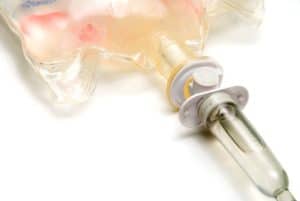
We report the first prehospital case of a venous air embolism in a 31-year-old male who became hemodynamically unstable after a peripheral intravenous catheter with unprimed tubing was placed by paramedics in the prehospital setting” Abramson et al (2019). Abstract: Venous air embolisms are rare but a cause of potentially life-threatening events with associated cardiovascular, […]

